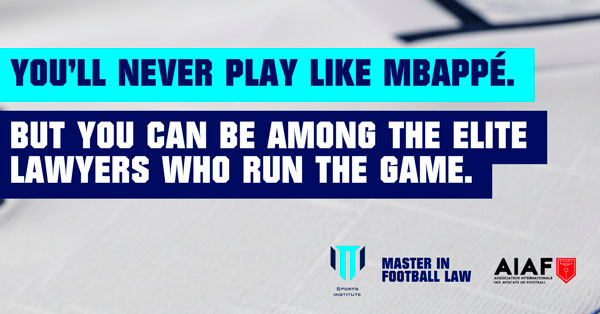Root Cause Analysis of Sentinel Events in Law Firms
The concept of a sentinel event refers to an adverse, unexpected, and serious occurrence that signals the urgent need to review processes to prevent its recurrence. Although this notion originates in other fields, its logic is fully applicable to other high-responsibility environments, such as law firms, where mistakes can have irreparable consequences: loss of a case, disciplinary sanctions, financial damages, or harm to professional reputation.
This article explores how to transfer into the legal field the root cause analysis (RCA) tools used in medicine, with the goal of fostering a culture of learning from mistakes rather than assigning blame.
It is worth noting that these safety and error analysis concepts originated in commercial aviation and other high-risk industries such as nuclear energy and aerospace engineering, where human errors could lead to catastrophes. These experiences demonstrated that a systemic approach—analyzing root causes rather than blaming individuals—is essential to build safer and more resilient organizations. Today, that same philosophy is applied in medicine and can, and should, also be transferred to the legal field.
Full article
Turning Missteps into Personal Jurisprudence
What Is a Sentinel Event in a Law Firm?
A sentinel event can be defined as a serious error or failure in professional practice that significantly compromises the client’s interests, regulatory compliance, or the integrity of the firm. Examples include:
- Missing the deadline for filing a critical appeal.
- Failing to submit key evidence in court.
- Accidental disclosure of confidential information.
- Signing a contract with unfavorable clauses due to inadequate review.
These events should not be seen merely as isolated mistakes, but rather as symptoms of systemic weaknesses in how the firm operates: organization, communication, supervision, use of technology, or workload management.
The Paradigm of Learning Instead of Blame
Legal tradition often tends to personalize mistakes: identifying the lawyer who made the error and sanctioning them in isolation. While this may appear fair in the short term, it is limited because it places all responsibility on the individual and does not allow a deeper understanding or modification of the structural conditions that made the mistake possible. As a result, opportunities to prevent the same error from happening again are lost.
For this reason, it is useful to look at models developed in other high-risk disciplines—such as aviation, medicine, or nuclear energy—where experience has shown that the key to improvement is not punishing the individual but analyzing the system as a whole.
Inspired by these models, law firms can move toward a truly just culture: one that clearly distinguishes between unintentional human error, risky behaviors, and gross negligence. Human error is accepted as an inevitable part of any complex practice and, rather than being repressed, it is studied with the aim of learning from it and strengthening internal processes. Risky behaviors, in turn, require training, clearer protocols, or organizational adjustments to reduce the probability of errors. Deliberate negligence or fraud, however, must be sanctioned, as they undermine ethics and professional responsibility.
This cultural shift fosters voluntary and early reporting of incidents, encourages open discussion of mistakes, and creates an environment of trust in which lawyers can share experiences without fear of reprisals. In this way, law firms transform errors into opportunities for collective learning, enhancing service quality, client safety, and organizational resilience.
Reason’s Swiss Cheese Model
The Swiss Cheese Model, proposed by James Reason in the early 1990s, explains how errors and accidents occur in complex systems. Instead of attributing failure to a single individual, the model shows that incidents are often the result of a convergence of weaknesses across multiple layers of defense within an organization.
Reason uses the image of several slices of Swiss cheese placed in a row to represent the different defensive barriers of a system. Each slice is a defense (protocols, supervision, training, technology), while the holes are the weaknesses or vulnerabilities of each layer. These holes are not fixed: they can open, close, or shift depending on the situation. An error or accident occurs only when the holes of several slices align, allowing a failure to pass through all defenses and cause harm.
Active vs. Latent Failures: The model distinguishes between active failures, committed by professionals on the front line (for example, a lawyer who forgets to file an appeal on time), and latent failures, which are hidden weaknesses in the system often related to organizational factors (such as lack of an alert system, poor communication, or excessive workload). While active failures are visible, latent ones often remain hidden until they combine to allow a human error to have serious consequences.
This model has profound practical implications: it recognizes that human errors are inevitable, that it is not enough to assign blame, and that the most effective strategy is to strengthen organizational defenses. Risk management means detecting and correcting latent failures before they align with active ones. In addition, a culture of safety must promote early reporting of incidents and near-misses, understood as opportunities for learning rather than reasons for punishment.
Applications in Different Fields
The model originated in aviation, where it led to the introduction of checklists, standardized cockpits, and non-punitive reporting systems. It was later adapted in medicine, transforming patient safety by demonstrating that mistakes are not solely the responsibility of the physician but of the hospital organization as a whole. Today, these principles are also applied in law firms and other professional settings, showing that a serious error is rarely the result of one careless lawyer but rather of multiple structural weaknesses: ineffective management systems, lack of supervision, workload overload, or unclear protocols.
Root Cause Analysis (RCA): A Methodology for Learning from Mistakes
RCA is a structured tool that systematically seeks to identify what happened, why it happened, and what measures should be implemented to prevent recurrence. Its value lies in going beyond the superficial explanation of the error and delving into the organizational, human, and technological factors that contributed to it. In the context of law firms, RCA does not focus only on the individual performance of one lawyer but examines the entire web of internal processes, communication, and oversight that make the firm function.
The methodology can be organized into five complementary stages:
- Event Identification: Clearly recognize and describe the critical or sentinel incident, recording objectively what happened and its consequences for both the client and the firm.
- Information Gathering: Collect all relevant data through interviews, case reviews, emails, management systems, and any documentation that can shed light on the incident.
- Cause Analysis: By repeatedly asking “why?”, identify the underlying latent causes. This distinguishes the immediate cause (e.g., forgetting to file a document) from systemic causes (e.g., lack of alert systems, insufficient supervision, or workload overload).
- Corrective Actions: Develop practical solutions that reduce the likelihood of recurrence, such as new technologies, standardized protocols, continuous training, or redistribution of workload.
- Evaluation and Follow-Up: Establish indicators to measure the effectiveness of the corrective actions and conduct periodic reviews to ensure the changes strengthen safety and quality.
Thus, RCA becomes not only a diagnostic tool but also a means of continuous improvement, helping law firms learn from serious incidents, reinforce their institutional resilience, and provide more reliable service to their clients.
Practical Example: Missed Appeal Deadline
- Event: An appeal was not filed on time, causing harm to the client.
- Immediate cause: The responsible lawyer forgot the deadline.
- Latent causes:
• No centralized digital deadline system.
• Each lawyer kept their own manual calendar.
• Lack of partner supervision.
• Excessive workload. - Corrective measures:
• Implement centralized deadline management software.
• Assign clear supervisory responsibilities.
• Hold weekly meetings to monitor critical cases.
• Redistribute workloads.
This approach avoids focusing solely on the lawyer’s “forgetfulness” and emphasizes strengthening the firm’s structure so the problem does not recur.
Benefits for Law Firms
Adopting RCA and the sentinel event logic can bring multiple advantages to law firms. First, it significantly reduces legal risks by identifying and correcting structural failures, thereby lowering the likelihood of negligence or non-compliance that could lead to sanctions or claims. It also improves service quality, as internal processes become safer, more reliable, and more efficient, leading to better outcomes for clients. Another fundamental benefit is reputation protection: a firm that demonstrates its ability to recognize mistakes, analyze them, and learn from them projects transparency, professionalism, and a commitment to excellence, which increases market trust.
Moreover, this methodology fosters a healthier workplace culture by replacing fear and blame with collective learning, turning every mistake into an opportunity for shared improvement. Ultimately, all of this translates into a clear competitive advantage, as clients and society increasingly value organizations that proactively manage risks and commit to high standards of quality and accountability.
Conclusion
Errors, although inevitable in any complex professional practice, can become drivers of change and growth if analyzed rigorously and without prejudice. The adaptation of the concept of sentinel events and the use of RCA in the legal field offer law firms the opportunity to evolve into safer, more resilient, and client-centered organizations.
Thus, when something goes wrong, the key is not to hide it or assign blame, but to learn from mistakes in order to build a stronger and more reliable professional future.
Comments
Related links
Main menu












